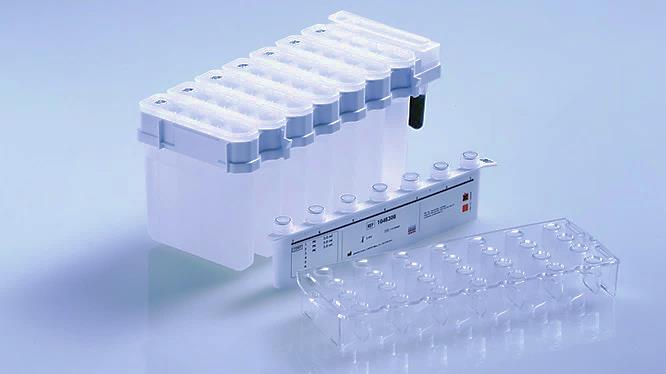Genomes of Advanced Neuroendocrine Neoplasms Unveil Subtypes
By LabMedica International staff writers
Posted on 13 Aug 2021
Metastatic and locally-advanced neuroendocrine neoplasms (aNEN) form clinically and genetically heterogeneous malignancies, characterized by distinct prognoses based upon primary tumor localization, functionality, grade, proliferation index and diverse outcomes to treatment.Posted on 13 Aug 2021
A clinical distinction is made between the poorly differentiated neuroendocrine carcinomas (NEC) and the more differentiated neuroendocrine tumors (NET), the latter are further subdivided based on their primary site in pancreas (pNET), gastro-intestinal tract or lung.

The QiaSymphony DSP DNA Midi kit (Photo courtesy of Qiagen)
Medical Oncologists at the Erasmus Medical Center Cancer Institute (Rotterdam, the Netherlands) and their colleagues sequenced the genomes of biopsy samples from 85 individuals with locally advanced or metastatic neuroendocrine neoplasms, including 70 samples taken from metastatic lesions and 15 samples representing the patients' primary tumor. A dozen samples came from cases with unknown primary tumor sites.
DNA was isolated with an automated workflow using the QiaSymphony DSP DNA Midi kit for blood and DSP DNA Mini kit for tumor samples (Qiagen, Hilden, Germany). DNA concentration was measured by Qubit fluorometric quantitation (Invitrogen, Life Technologies, Carlsbad, CA, USA). DNA libraries for Illumina sequencing were generated from 50–100 ng of genomic DNA and subsequently whole-genome sequenced in a HiSeq X Ten system (Illumina, San Diego, CA, USA) using the paired-end sequencing protocol (2 × 150bp) for both the biopsy and matched blood sample.
The team observed relatively high tumor mutational burdens (TMB) in neuroendocrine carcinoma (average 5.45 somatic mutations/Mb) with TP53, KRAS, RB1, CSMD3, APC, CSMD1, LRATD2, TRRAP and MYC as major drivers versus an overall low TMB in neuroendocrine tumors (1.09). Furthermore, they observed distinct drivers which are enriched in somatic aberrations in pancreatic (MEN1, ATRX, DAXX, DMD and CREBBP) and midgut-derived neuroendocrine tumors (CDKN1B). Finally, 49% of aNEN patients reveal potential therapeutic targets based upon actionable (and responsive) somatic aberrations within their genome; potentially directing improvements in aNEN treatment strategies.
The authors conclude that their study underscores that whilst the number of genetic aberrations is increased, the inventory of somatic drivers does not significantly change between primary and metastatic NEN. The major advantages of characterizing the genomic landscape of metastatic NEN lie within the identification of potentially actionable targets and treatment-induced (resistance-) mechanisms within the late-stage disease. The study was published on July 29, 2021 in the journal Nature Communications.
Related Links:
Erasmus Medical Center Cancer Institute
Qiagen
Invitrogen
Illumina














